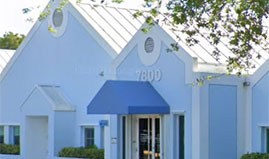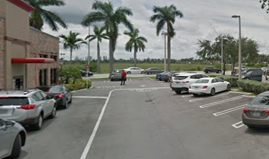Shoulder Slap Lesions & Labrum Tears
Description Slap Lesions And Labrum Tears
The labrum is a lip-like piece of cartilage that deepens the socket (glenoid) of the shoulder joint. It functions to help stabilize the shoulder. The labrum is divided into superior, inferior, anterior and posterior segments. The anterior-inferior portion of the labrum can be torn when the shoulder dislocates in a forward direction. A superior labrum tear is also known as a "SLAP Lesion". Superior labrum tears can occur when a patient falls onto an outstretched hand or shoulder or by a traction injury. They may also occur in association with rotator cuff tendonitis and tears. Posterior labrum tears may occur with certain sports like football lineman or with weight lifting activities.
Usually people complain of pain or a feeling of instability in the shoulder. It is made worse when they put the arm into the "cocked position" ready to throw. Some may complain of pain in the shoulder on lifting heavy objects. A clicking sound may also be heard when trying to throw. SLAP tears may affect the throwing accuracy and velocity of baseball pitchers or other athletes involved in overhead activities.
Your doctor will perform a comprehensive physical examination. Additional tests may be performed to rule our other possible injuries. These tests may include x-rays, CT scan, and magnetic resonance imaging (MRI).
There is no acute treatment for this condition as often the individual is not aware of a particular time or event precipitating it. The initial treatment is to reduce the amount of shoulder inflammation and swelling. There is no physiotherapy modality, which will heal the lesion itself, but therapy may be beneficial in strengthening and balancing the muscles of the shoulder. Surgery may be recommended to repair the lesion. Your orthopedic surgeon can guide you as to which form of treatment is best for you.
Surgical repair is best performed arthroscopically. During surgery, the doctor will examine the shoulder for instability and assess the lesion. The SLAP lesion and/or labrum tear can be smoothened, partial removal, or repaired. Anchors may be placed into the bone and used to repair the labrum. After surgery, the shoulder is placed in a sling. Rehabilitation is essential after surgery to restore normal shoulder motion and strength.
- Superior Labrum Anterior Posterior lesion – a term coined by Dr. Steven Snyder at the Southern California Orthopedic Institute, a mentor and sports fellowship instructor of Dr. Hommen.
- A detachment of the biceps anchor and superior labrum from its attachment on the superior glenoid.
- A traction injury to the arm.
- Throwing activity in overhead athletes - for example a baseball pitcher.
- Overhead repetitive injury to arm
- Bicep tendon tear.
- Labrum tear.
- Capsule tear.
- Rotator cuff tears.
- Articular cartilage osteochondral injury.
- Shoulder therapy.
- Avoiding painful activities.
- They are best treated using arthroscopic techniques.
- Anchors with sutures are placed in the glenoid and used to repair the biceps to back to its glenoid origin.
- Trauma
- Repetitive activity.
- Shoulder dislocations or subluxations.
- A tear of the cartilage that surrounds the glenoid of shoulder.
- A minimally invasive procedure to repair the tendon tear.
- A camera is inserted into the shoulder and viewed via a video monitor.
- The surgeon can repair the lesion.
A less invasive procedure with the benefits:
- Less surgical dissection.
- Less surgical pain.
- Faster recovery rates.
- Better visualization of the shoulder anatomy.
- Arthroscopies are performed under general anesthesia.
- The anesthesiologist may also perform a nerve block.
- A nerve block helps to reduce the amount of general anesthesia delivered as well as make you comfortable after surgery.
- You may take your regularly scheduled medications for blood pressure and diabetes.
- Certain medications must be stopped well before surgery (such as blood thinners). A complete list of these medications will be given to you by our office staff.
- Do not eat or drink after midnight before your surgery.
- You will be contacted by the hospital or surgical center the day before surgery.
- You will be notified: when to arrive for your surgery, when you should not eat, and what medications you may continue to take. They will be helpful in answering questions you may have concerning medications, transportation, and other concerns.
- The majority of arthroscopic cases are outpatient procedures and patients are allowed to go home the same day of their procedure.
In certain cases, patients may stay overnight for observation at the hospital and will be allowed to go home the following morning after surgery.
- Patients who have a nerve block, will have prolonged anesthesia to the shoulder and arm and may go home with the arm still “numb”.
- Therefore, be careful to avoid any pressure or injury to the shoulder and arm as you will not feel the pain until the block has worn off.
- Most nerve blocks will wear off 12 hours after surgery, but some blocks may be shorter while others may last 24 hours.
Be sure to take your pain medications prescribed to you once you get home. Do not wait to take the medications until the nerve block wears off.
- The majority of arthroscopic cases are outpatient procedures and patients are allowed to go home the same day of their procedure.
- In certain cases, patients may stay overnight for observation at the hospital and will be allowed to go home in the morning after surgery.
- After your surgery, expect to remain in the recovery room until you have been cleared to go home. This may require a few hours.
- You should arrange transportation with family, friends or other means for after surgery.
- You will NOT be able to drive for 2-4 weeks after surgery.
- As with any surgery, there will be surgical pain. The benefit of arthroscopic surgery is the limited amount of surgical dissection and faster recovery time.
- You will be prescribed narcotic medication to go home with.
- Do NOT make important decisions while taking narcotic medications.
- You will be prescribed a narcotic for pain relief after surgery.
- You should continue the medication for the first 72 hours as directed and then wean the medications when you are able.
- Do not attempt to lift the arm “actively” by yourself.
- Do NOT remove the sling. The repair will take about 4- 6 weeks to scar onto the bone and longer for complete Early activity may cause failure of your repair.
- Do NOT make important decisions immediately after surgery or while on narcotic medications.
- Do not bathe or go into a pool until Dr. Hommen has cleared you for such activity.
- You may shower after 72 hours if the incisions are dry.
- Remove dressings from shoulder prior to showering (see section below).
- Remove sling and keep arm at side.
- You may remove the shoulder dressings after 72 hours.
- Please do NOT remove the white sticky “steri-strips”.
- Towel-dry the incision after showering.
- Do not shower if you notice any drainage from the incision sites.
How Do I Wean Pain Medications After Surgery?
- Weaning narcotics is best done by alternating Tylenol or anti-inflammatories such as Motrin or Aleve in place of a regularly scheduled narcotic pill at every other scheduled narcotic dose.
- Narcotics are eventually discontinued altogether.
- Narcotics can make you constipated, nauseous, and can affect your ability to make decisions.
Do I Wear a Sling After Surgery?
- The shoulder MUST be maintained in a sling for 2-4 weeks (day and night time) except for shower, bath and therapy.
- Non-compliance with immobilization can cause failure of the repair.
What Shirt Should I Wear to Surgery?
- Bring a loose fitting shirt (button-down or over-sized T-shirt).
- The arm in the sling is tucked under the shirt, the other arm is placed through the sleeve.
Do I Receive Rehabilitation After Surgery?
- Therapy begins according to a strict therapy schedule usually 2-5 days after surgery.
- Physical therapy progresses over a 16-week period from full immobilization to full return of motion.
- Expect return to full overhead activities and contact sports at approximately 6 months.
- Each patient has an individually designed rehab program.
Where Can I Do Therapy?
- Therapy is performed with a licensed therapist usually at approved outpatient therapy centers.
- Hommen will tailor a therapy protocol according to your shoulder needs for therapist to follow.













